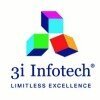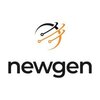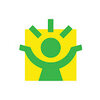
i
Allied Digital
Services
Filter interviews by
Allied Digital Services Windows System Administrator Interview Questions and Answers
Allied Digital Services Windows System Administrator Interview Experiences
1 interview found
I applied via Referral and was interviewed before Dec 2020. There was 1 interview round.
Interview Questionnaire
3 Questions
- Q1. What is active directory?
- Ans.
Active Directory is a directory service developed by Microsoft for Windows domain networks.
It stores information about network resources such as users, computers, and printers.
It provides authentication and authorization for network users.
It allows administrators to manage network resources from a central location.
It uses a hierarchical structure of domains and organizational units (OUs) to organize resources.
It suppor...
- Q2. What is dns and dhcp
- Ans.
DNS is a system that translates domain names to IP addresses. DHCP is a protocol that assigns IP addresses to devices on a network.
DNS stands for Domain Name System
DNS translates domain names to IP addresses
DHCP stands for Dynamic Host Configuration Protocol
DHCP assigns IP addresses to devices on a network
DNS and DHCP are both essential components of network infrastructure
- Q3. Explain Fsmo roles
- Ans.
FSMO (Flexible Single Master Operations) roles are specialized domain controller tasks in Active Directory.
There are 5 FSMO roles: Schema Master, Domain Naming Master, RID Master, PDC Emulator, and Infrastructure Master.
Schema Master: responsible for maintaining and modifying the Active Directory schema.
Domain Naming Master: responsible for adding or removing domains in the forest.
RID Master: responsible for allocating...
Interview Preparation Tips
Skills evaluated in this interview
Top trending discussions






Interview questions from similar companies

Windows System Administrator Interview Questions & Answers
Microlandposted on 16 Nov 2021
I applied via Naukri.com
Interview Questionnaire
2 Questions
- Q1. How many types of servers? On which model you have worked? Page file? ADDS? DNS? DHCP? LDAP vs Kerberos? RAID? Storage methods? File Share? AD infrastructure? Minimum hardware requirements for server insta...
- Q2. ITIL process? Incident vs problem? Change process? ITSM tools?
Interview Preparation Tips

I applied via Recruitment Consulltant and was interviewed before Jul 2021. There was 1 interview round.
(2 Questions)
- Q1. Normal bgv questuins
- Q2. Bakdgeiud quaryims last company experience salary and all.
Interview Preparation Tips

I applied via Approached by Company and was interviewed before Apr 2021. There were 2 interview rounds.

(3 Questions)
- Q1. What are your salary expectations?
- Q2. Share details of your previous job.
- Q3. Why are you looking for a change?
Interview Preparation Tips
Mainly if u already have a job never ever accept this company. They are bluffed me and they terminated me job after 9 months. Even i got best employ award in that same organisation

I appeared for an interview in May 2021.
Interview Questionnaire
2 Questions
- Q1. Windows Server
- Q2. Windows Server Interview
Interview Preparation Tips

I applied via Naukri.com and was interviewed before Feb 2021. There were 3 interview rounds.
(2 Questions)
- Q1. Os installations?Type of os? Mail migrations? Outlook configurations.
- Q2. About Network Printer and domain, workgroup. Ost pst files..,etc.
(2 Questions)
- Q1. Antivirus, system troubleshooting.
- Q2. Outlook configurations?
- Ans.
Outlook configurations involve setting up email accounts, managing profiles, and customizing settings for optimal use.
Add an email account: Use the 'File' menu, select 'Add Account', and follow the prompts to enter your email details.
Configure server settings: For IMAP/POP accounts, ensure you input the correct incoming and outgoing server settings.
Set up signatures: Go to 'File' > 'Options' > 'Mail' > 'Signat...

Interview Preparation Tips

I applied via Referral and was interviewed before Jul 2021. There were 2 interview rounds.
(6 Questions)
- Q1. Tell me something about yourself.
- Ans.
I am a highly skilled and experienced Desktop Support Engineer with a passion for solving technical issues and providing excellent customer service.
I have a Bachelor's degree in Computer Science and 5 years of experience in desktop support.
I am proficient in troubleshooting hardware and software issues, including operating systems, applications, and network connectivity.
I have a strong knowledge of Active Directory, Mi...
- Q2. Explain What is domain ?
- Ans.
A domain is a group of computers and devices on a network that are administered as a unit with common rules and procedures.
A domain is a logical grouping of network resources such as computers, printers, and servers.
It allows for centralized management of users, computers, and security policies.
Domains are typically used in business environments to provide a secure and organized network infrastructure.
An example of a d...
- Q3. Different types of RAM.
- Ans.
Different types of RAM include DDR, DDR2, DDR3, DDR4, and SDRAM.
DDR (Double Data Rate) RAM is the most common type used in desktop computers.
DDR2 RAM is an older version with slower speeds compared to DDR3 and DDR4.
DDR3 RAM is faster and more power-efficient than DDR2.
DDR4 RAM is the latest standard, offering higher speeds and larger capacities.
SDRAM (Synchronous Dynamic Random Access Memory) is an older type used in o...
- Q4. How to take data backup?
- Ans.
Data backup can be taken using various methods depending on the type of data and storage medium.
Identify the type of data and storage medium
Choose a backup method such as full, incremental or differential
Select a backup location such as external hard drive, cloud storage or tape drive
Schedule regular backups to ensure data is up-to-date
Test the backup to ensure it can be restored in case of data loss
- Q5. How to install operating system?
- Ans.
To install an operating system, you need to boot from a bootable media and follow the installation wizard.
Create a bootable media (USB, DVD, etc.) with the operating system image
Insert the bootable media into the computer and restart it
Press the key to enter the boot menu (usually F12 or Del)
Select the bootable media from the list of boot devices
Follow the installation wizard and choose the installation options (langua...
- Q6. What is BSOD error in windows?
- Ans.
BSOD stands for Blue Screen of Death. It is an error screen displayed on Windows operating systems when a fatal system error occurs.
BSOD is a critical error that causes the computer to crash and display a blue screen with error codes.
It is usually caused by hardware or software issues, such as faulty drivers, incompatible software, or hardware failures.
BSOD can prevent the computer from booting up properly and may requ...
(1 Question)
- Q1. What salary are you expecting?
- Ans.
I am expecting a salary that is competitive and reflective of my skills and experience in desktop support engineering.
I am looking for a salary that aligns with industry standards and the responsibilities of the role.
I have researched the average salary range for desktop support engineers in this location.
I am open to negotiation based on the overall compensation package, including benefits and opportunities for growth...
Interview Preparation Tips
Skills evaluated in this interview

I applied via Recruitment Consulltant and was interviewed before Oct 2023. There were 2 interview rounds.
(2 Questions)
- Q1. What is the difference of OST and PST.
- Ans.
OST is an offline Outlook data file used by Exchange Server, while PST is a personal storage file used by Outlook for POP3, IMAP, and web-based mail accounts.
OST is used by Exchange Server to store a copy of mailbox data on the local computer.
PST is used by Outlook to store emails, contacts, calendar items, and other data for POP3, IMAP, and web-based mail accounts.
OST files are synchronized with the Exchange Server wh...
- Q2. What is the difference of OS and Device manager.
- Ans.
OS manages the overall operation of a computer system, while Device Manager manages hardware devices connected to the system.
OS controls the overall operation of a computer system, including managing resources, running applications, and providing user interface.
Device Manager is a component of the OS that manages hardware devices connected to the system, allowing users to view and control device settings.
Examples: Wind...
(4 Questions)
- Q1. What is your qualification.
- Ans.
I have a Bachelor's degree in Computer Science and 3 years of experience in desktop support.
Bachelor's degree in Computer Science
3 years of experience in desktop support
- Q2. How many years of experience do you have.
- Ans.
I have 5 years of experience in Desktop Support roles.
5 years of experience in providing technical support for desktop systems
Proficient in troubleshooting hardware and software issues
Experience in setting up and configuring computer systems
Familiarity with operating systems such as Windows and macOS
Strong communication and customer service skills
- Q3. What is your preferred Salary.
- Ans.
My preferred salary is negotiable based on the responsibilities and benefits offered.
Salary expectations are based on industry standards and cost of living in the area
Consider the benefits package offered in addition to base salary
Open to discussing salary range based on responsibilities and growth opportunities
- Q4. You are comfortable of this areas.
Interview Preparation Tips
Thank you so much.
Skills evaluated in this interview

I applied via Walk-in and was interviewed in Feb 2022. There were 2 interview rounds.

(4 Questions)
- Q1. Tell me something about your self
- Q2. OSI layer, different in rj 45 and rj 11 connector,
- Ans.
RJ-45 and RJ-11 connectors differ in the number of pins and the OSI layer they operate on.
RJ-45 has 8 pins while RJ-11 has 4 or 6 pins.
RJ-45 operates on the Physical and Data Link layers of the OSI model.
RJ-11 operates on the Physical layer of the OSI model.
RJ-45 is used for Ethernet connections while RJ-11 is used for telephone connections.
- Q3. Different in workgroup and domain
- Ans.
Workgroup is a peer-to-peer network while domain is a centralized network managed by a domain controller.
Workgroup is suitable for small networks while domain is suitable for large networks.
In workgroup, each computer has its own user accounts while in domain, user accounts are managed centrally.
Domain provides better security and easier management of resources.
Workgroup does not have a centralized authentication syste...
- Q4. How to make bootable pendrive
- Ans.
To make a bootable pendrive, use a tool like Rufus or Windows Media Creation Tool.
Download and install a bootable USB tool like Rufus or Windows Media Creation Tool
Insert the USB drive and select it in the tool
Select the ISO file or operating system you want to make bootable
Click on the 'Start' button and wait for the process to complete
Once done, restart your computer and boot from the USB drive
Interview Preparation Tips
- Hardware Networking
Skills evaluated in this interview

I applied via Naukri.com and was interviewed in Nov 2022. There were 3 interview rounds.

(2 Questions)
- Q1. What is your experience
- Ans.
I have over 5 years of experience in desktop support, troubleshooting hardware and software issues, and providing excellent customer service.
Managed a ticketing system to prioritize and resolve over 50 support requests daily.
Provided remote support using tools like TeamViewer and Remote Desktop to assist users.
Trained new team members on troubleshooting techniques and company policies.
Implemented a new imaging process ...
- Q2. Are u comfortable with flexi shifts
- Ans.
Yes, I am comfortable with flexi shifts.
I am willing to work flexible hours to ensure smooth operations.
I understand the importance of being available during peak hours.
I have experience working in shifts and can adapt to changing schedules.
I am committed to meeting the needs of the team and the organization.
(2 Questions)
- Q1. What is outlook and outlook 365
- Ans.
Outlook is a personal information manager and email client developed by Microsoft. Outlook 365 is a cloud-based subscription service of Outlook.
Outlook is a software application used for managing personal information such as emails, calendars, contacts, and tasks.
It allows users to send, receive, and organize emails from multiple email accounts.
Outlook provides features like calendar management, task tracking, note-tak...
- Q2. What is client and server os
- Ans.
Client OS is used by end-users to interact with the computer while Server OS is used to manage resources and provide services to clients.
Client OS is designed for personal computers and laptops, such as Windows 10, macOS, and Ubuntu.
Server OS is designed for servers, such as Windows Server, Linux Server, and Unix.
Client OS provides a graphical user interface (GUI) for end-users to interact with the computer, while Serv...
Interview Preparation Tips
Skills evaluated in this interview
Allied Digital Services Interview FAQs
Tell us how to improve this page.
Allied Digital Services Interviews By Designations
- Allied Digital Services Engineer- Customer Support Interview Questions
- Allied Digital Services Desktop Support Engineer Interview Questions
- Allied Digital Services Service Desk Engineer Interview Questions
- Allied Digital Services Technical Support Engineer Interview Questions
- Allied Digital Services System Administrator Interview Questions
- Allied Digital Services Service Delivery Manager Interview Questions
- Allied Digital Services Project Manager Interview Questions
- Allied Digital Services Technology Analyst Interview Questions
- Show more
Interview Questions from Similar Companies
Allied Digital Services Windows System Administrator Reviews and Ratings
based on 2 reviews
Rating in categories
|
Engineer- Customer Support
209
salaries
| ₹1.6 L/yr - ₹4.6 L/yr |
|
Desktop Support Engineer
124
salaries
| ₹1.5 L/yr - ₹4.2 L/yr |
|
Network Engineer
104
salaries
| ₹2 L/yr - ₹6.6 L/yr |
|
Service Desk Engineer
84
salaries
| ₹2.1 L/yr - ₹6.8 L/yr |
|
Technical Support Engineer
58
salaries
| ₹1.5 L/yr - ₹5.5 L/yr |

3i Infotech

Microland

Newgen Software Technologies

NSE.IT
- Home >
- Interviews >
- Allied Digital Services Interview Questions














